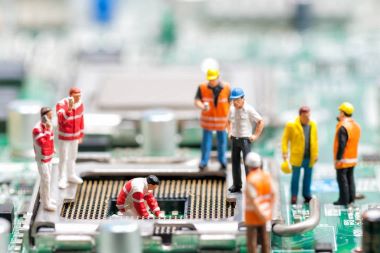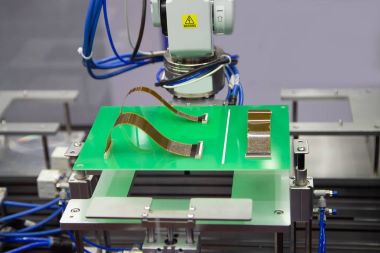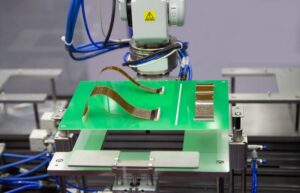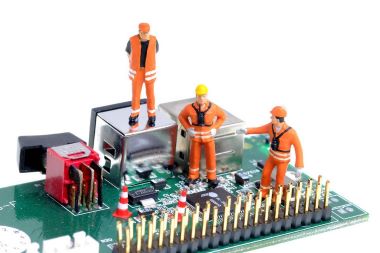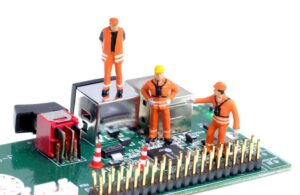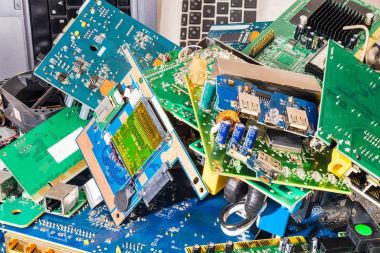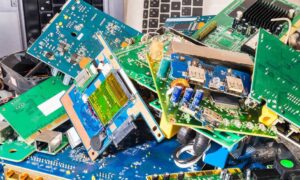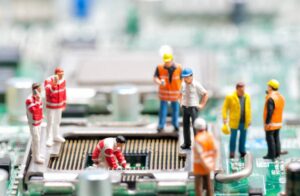
To ensure that defects are not created during production and use, PCB manufacturers outgassing printed circuit boards during production. Find out what can be done to prevent or reduce outgassing in this article.
What is PCB outgassing?
When outgassing occurs, the gases trapped in the PCB will release within the board in two common situations
- Wave soldering or manual soldering process:
During this process, any moisture near the through-hole is turned into vapour by the heat. When this gas escapes, it creates voids in the solder resist layer.
- Use in ultra-high vacuum environments:
In applications involving ultra-high vacuum environments (such as outer space, laboratories or medical facilities), the vacuum can cause vapour to escape from the PCB, thus creating condensation in the rest of the device.
What are the consequences of PCB outgassing?
Both of these situations occur at different stages of the PCB lifecycle and so present a number of challenges to manufacturers, both of which can lead to defects in the PCB and therefore to a non-functional product.
When outgassing occurs during the soldering process, voids can form in the solder resist layer, which can lead to serious problems. During the deposition process, PCBs need to be drilled and copper plated, with a uniform layer of chemically plated copper acting as a conductor of electricity in the board. Outgassing of PCBs can lead to gaps in the copper plating, which can block the passage of current and cause defects and failures in the PCB.
The problem with outgassing in high vacuum environments depends on the equipment used. In space-related applications, outgassing forms condensate that can interfere with camera lenses or measuring tools, for example, causing problems with measurement results.
Medical facilities and scientific laboratories must have a sterile environment in order to use their equipment properly. Outgassing can contaminate equipment and the surrounding environment, posing a risk to patients or leading to inaccurate test results.
What are the available solutions?
Choosing the right materials
When choosing the materials that make up a PCB, plating made from gold, silver or tin may contain salts or organic substances which can generate gases when heated during the deposition process.
Correct manufacturing
To achieve a high quality PCB then the correct control of the manufacturing process is essential. When the chemical copper plating is too thin or the pre-heating process is incorrect, off-gassing usually occurs during the soldering process.
Even if the PCB has the right material and production method, it can still outgas in high vacuum applications. Baking PCBs for high vacuum systems during production is effective in reducing outgassing, especially when done in vacuum. The baking process removes any residual moisture before use.
Alternatively, when implementing PCBs, customers can design equipment to keep vapours away from critical components. Developing a path for the gas to escape through ventilation holes can prevent it from being trapped.
Choosing the right supplier ensures high quality PCBs
KingPCB is one of the leading PCB manufacturers in China and we have over 15 years of experience in manufacturing, assembly and sourcing of electronic components.
Choose to contact us for any assistance in finding the right PCB for you


